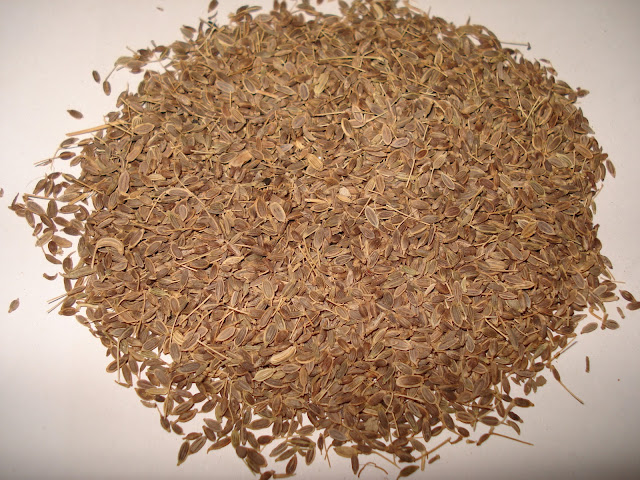PLANT TYPE: Annual
SCIENTIFIC NAME: Anethum graveolens ZONE / HARDINESS: Annual - not applicable
MATURE PLANT SIZE: Up to 36 inches high x 24 inches wide
LIGHT: Full Sun - Wind Protected Area
FLOWERING PERIOD: July to September
SOIL TYPE: Fairly rich, well-drained, moist soil
pH RANGE: 6.0
KNOWN PESTS: N/A
KNOWN DISEASES: N/A
OVERVIEW:
Dill, a popular annual, has bluish-green stems that contrast with finely divided, yellow-green, plume-like leaves and yellowish flowers. Dill grows about 2 to 3 feet high.
Both the leaves and seeds of dill are popular for flavoring pickles, sauerkraut, and beet dishes. It can be combined with garlic and pepper to produce a highly flavored Mediterranean or East European roast (often cooked over a spit outdoors). The seeds yield a fragrant oil.
Plant early in the spring after the danger of frost. Seeds are best sown where they will stay, as dill does not transplant well. Plant 1/4 inch deep about 10 inches apart in a prepared bed. A protected location is best to ensure that the tall stalks are not destroyed by the wind. Enjoys full sun, fairly rich, well-drained, moist soil. In tropical climate however, dill usually grows well in area that is slightly shady. Snip the leaves as needed during the summer and harvest the top half of the plant when the seedheads are beige. Dry in bunches or a bag. Store dried foliage and seeds in an air-tight container. Fresh leaves can be refrigerated for 1 week. Dillweed is easiest to handle when frozen on its stem. When needed, snip some off and return the rest to the freezer.
Dill Flower
PROPAGATION / SOWING:
Direct Seed. Plant 1/4 inch deep about 10 inches apart in a prepared bed. Does not transplant well.
COMPANION PLANTING:
Dill and cabbage plants grow well together. Dill also helps corn, lettuce, onions, and cucumbers. The flowers attract honey bees to the garden.
CARE & GROWING:
In spring, sow seeds in shallow drills about 10 inches apart in a prepared bed where they will stay. Firm the soil down and water well. Repeat the plantings for a continuous supply of fresh dill leaves. The soft, delicate seedlings do not transplant well and are easily blown over by strong winds. The plants do best in a sunny, sheltered area.
HARVESTING:
Snip the leaves as needed during the summer and harvest the top half of the plant when the seedheads are beige. Dry in bunches or a bag. Store dried foliage and seeds in an air-tight container. Fresh leaves can be refrigerated for 1 week. Dillweed is easiest to handle when frozen on its stem. When needed, snip some off and return the rest to the freezer.
Dried shredded dill leaves
USAGE:
Very usefull in culinary, decorating, and medicinal. Dill is used in herbal butter and herb vinegars. It can flavor fish, lamb, poultry, cheese, cream, eggs, vegetables, avocados, apples, popcorn, salads, soups, sauces, and spreads. The plant is used to make green dye. The foliage and flowers dry nicely and add an airy touch to plant arrangements. Dill also can be grown in containers with some success.
Cucumber dill dip
Baked salmon with lime dill sauce
Lemon dill potato salad
MEDICINAL PROPERTIES:
Dill is mostly a culinary herb today, but it does have some value in medicine, mostly as a stomach soother and anti-gas remedy. It is also said to increase mother's milk and help treat breast congestion from nursing. It is mild, and makes a good remedy for colic in babies.
Dill water is used often for relief of the above symptoms, and can be made by adding 8 drops of Oil to 1 pint of water. Take up to 8 teaspoons per day of this concoction. Dill can also be made into a Tea, and sweetened with honey, or prepared as an infusion by steeping 2 teaspoons of seed in 1 cup of water for 10-15 minutes, then straining. Take 1-2 cups per day.


















